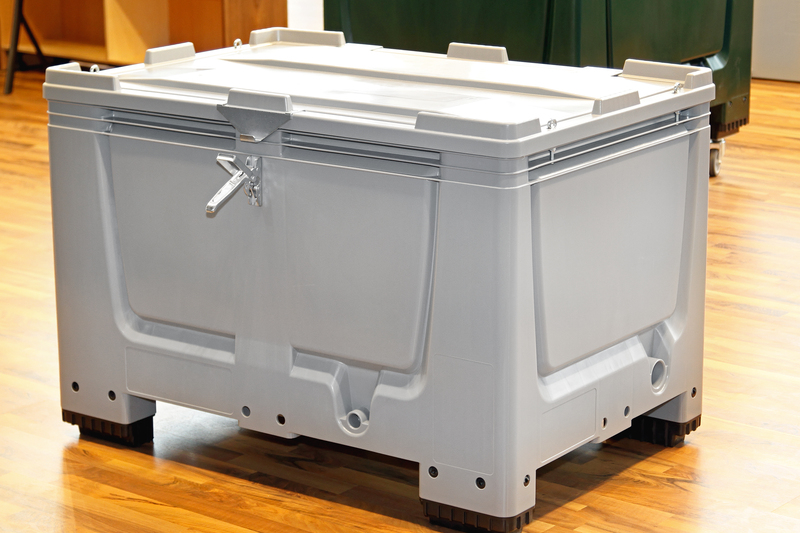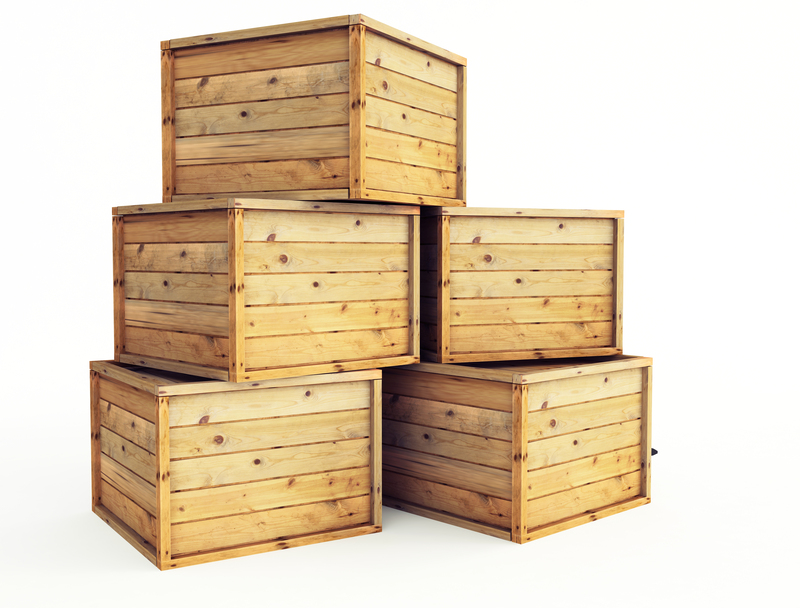Packing 101: Essentials for a Successful House Move
Posted on 20/06/2025
Packing 101: Essentials for a Successful House Move
Moving to a new home is an exciting journey, but without proper organization, the experience can quickly become overwhelming. One of the most critical aspects to ensure a smooth, stress-free house move is packing efficiently and methodically. In this comprehensive guide, we will walk you through packing essentials, provide expert moving tips, and highlight everything you need for a seamless relocation. Whether you're planning your first big move or you're a seasoned mover, these tips will help you avoid common pitfalls so you can transition to your new home with confidence.
Why Effective Packing Is Crucial for a Successul House Move
Packing is much more than simply putting your belongings into boxes. It's a process that requires careful planning, strategic organization, and the right supplies. Improper packing can lead to broken items, lost belongings, and unnecessary stress on moving day. By mastering the fundamentals of packing, you'll not only safeguard your possessions but also make unpacking at your new place much more manageable.
The Benefits of Organized Packing
- Reduces Stress: Knowing where everything is keeps anxiety at bay.
- Protects Belongings: Using the right packing essentials prevents damage.
- Efficient Unpacking: Labelled and sorted boxes make setting up your new home easier.
- Saves Time: A systematic approach ensures no last-minute rush.

Essential Packing Supplies You'll Need for Your Move
Before you even start packing up your house, gather all the necessary moving supplies to make the process smoother and more efficient. Here's a checklist of must-have packing materials for a hassle-free house move:
- Sturdy Moving Boxes: Choose various sizes. Small boxes for heavy items and large ones for linens or clothes.
- Packing Tape and Dispensers: Invest in good-quality tape to secure boxes. A dispenser will speed up the process.
- Bubble Wrap and Packing Paper: Essential for wrapping fragile items like glassware and electronics.
- Markers and Labels: Clearly mark every box with its contents and the room it's destined for.
- Scissors and Box Cutters: For quick cutting and opening of packing materials.
- Furniture Protectors: Moving blankets, furniture pads, and stretch wrap will prevent scratches and dents.
- Plastic Bags and Sealable Pouches: Great for loose parts, screws, or keeping liquids contained.
- Garbage Bags: Useful for soft items like clothes and bedding, but be careful not to mix with trash.
- Gloves: Protect your hands during heavy lifting and when handling sharp objects.
Pro Tip:
Always order more boxes and packing materials than you think you'll need. It's better to have extras than to run out mid-packing!
Step-by-Step Guide to Packing for a House Move
Let's break down the step-by-step process of packing for a successful house move, ensuring nothing gets left behind and everything arrives intact.
Step 1: Declutter Before You Pack
Packing unnecessary items only adds to your burden. Sort, donate, recycle, or discard anything you no longer need. This not only lightens your load but can also reduce moving costs.
- Clothing: Donate what you haven't worn in a year.
- Books: Keep only favorites; donate the rest.
- Toys and Games: Give away unused or outgrown items.
- Furniture: Sell or donate pieces you won't use in your new home.
Step 2: Create a Packing Plan
Start early and tackle one room at a time. Make a checklist for each space. This systematic approach keeps you organized and prevents overwhelm.
- Pack least-used rooms first: Guest rooms, basements, or storage spaces can be packed ahead of time.
- Everyday essentials last: Kitchen and bedroom items should be packed closer to your moving date.
Step 3: Pack Room-by-Room
Start with items you use infrequently and work your way to daily essentials. Use the right type of boxes and protect breakables with ample cushioning. Label each box with its contents and destined room.
Step 4: Use Smart Packing Techniques
- Heavier Items on the Bottom: Prevents lighter items from getting squished.
- Fill Gaps: Use packing paper or towels to prevent movement in boxes.
- Don't Overpack: Keep box weights manageable to avoid injuries and box breakage.
- Wrap Liquids: Put bottles in sealable bags to prevent spills.
- Keep Hardware Together: Place screws and small parts in labeled plastic bags taped to their furniture.
Step 5: Label Everything Clearly
Every box should be labeled on multiple sides with its room and a brief description of contents--e.g., "Kitchen: Pots & Pans." Use color-coded stickers or markers for extra clarity. This step is key to a hassle-free unpacking experience after you move.
Essential Items to Pack Last (Your "Open First" Box)
As moving day approaches, set aside an "open first" box for every member of your household. These essentials for the first night and day in your new house will keep everyone comfortable until the rest of your possessions are unpacked.
- Toiletries (toothbrush, toothpaste, soap, etc.)
- Medication and First Aid Kit
- Chargers and Power Strips
- Change of Clothes and Pajamas
- Bedding and Towels
- Paper Plates, Cups, and Utensils
- Non-perishable Snacks and Water Bottles
- Important Documents (moving contracts, IDs, contacts)
- Basic Tools (screwdriver, box cutter, flashlight)
- Pet Supplies if you have furry companions
Room-by-Room Packing Essentials and Tips
Every room in your home presents unique packing challenges. Here's a detailed breakdown covering packing essentials for each major area.
Packing the Kitchen
- Use dish-pack boxes: These are designed specifically for breakables.
- Wrap each plate, cup, and glass individually: Avoid stacked packing unless cushioned.
- Utilize original manufacturer boxes: For appliances and electronics, if available.
- Dispose or seal liquids properly: To avoid leaks and sticky surprises.
Packing the Living Room
- Disassemble furniture: Remove legs from tables, wrap separately and label each component.
- Protect electronics: Use bubble wrap for TV screens and keep cables organized.
- Pack books in small boxes: To avoid excessive weight and box breakage.
Packing Bedrooms
- Dresser drawers: Can sometimes be left full, but secure them shut with plastic wrap.
- Mattress covers: Protect mattresses and box springs from dirt and moisture.
- Wardrobe boxes: Keep hanging clothes wrinkle-free and ready to wear.
Packing the Bathroom
- Seal liquids tightly: Place in resealable bags.
- Dispose of expired products: Lighten your load!
- Pack towels and soft items around breakables: Utilize every inch of space for protection.
Packing the Garage and Outdoor Items
- Drain all fuel from equipment: It's both safe and frequently required by moving companies.
- Use original boxes for power tools: If possible, for extra protection.
- Bundle up loose items: Use rope or tape to keep garden tools together.
Common Packing Mistakes to Avoid
Minimize moving mishaps by steering clear of these all-too-common errors:
- Waiting until the last minute: Rushed packing heightens the risk of breakage and lost items.
- Using low-quality packing supplies: Thin boxes and weak tape offer little protection.
- Ignoring proper labeling: Leads to confusion and wasted time during unpacking.
- Packing boxes too heavy: Injuries and damaged goods aren't worth it--aim for no more than 50 lbs per box.
- Leaving empty spaces in boxes: Causes items to shift and break.
Bonus Tips for a Stress-Free, Efficient House Move
- Photograph electronic setups: Makes reconnecting electronics simple in your new home.
- Schedule utilities transfer early: You don't want to move into a dark, unheated house.
- Enlist help: Friends, family, and professional movers can make a big difference.
- Keep valuables with you: Important documents, jewelry, and heirlooms shouldn't be packed with the moving truck.
- Stay hydrated and take breaks: Moving is physically taxing; take care of yourself!
When to Consider Professional Packing Services
While DIY packing saves money, certain circumstances may call for the help of professional packers:
- Lack of Time: Packing a whole house can take days or even weeks.
- Valuable/Fragile Items: Antiques, artwork, or high-end electronics deserve expert care.
- Physical Limitations: If lifting or repetitive motion is a challenge, pros can handle the heavy work.
Most moving companies offer packing and unpacking services. Weigh this convenience against your budget and personal needs.

Settling into Your New Home: Unpacking Strategies
The end of your move is just the beginning of making your new house a home. Here's how to unpack efficiently after a move:
- Start with necessities: Refer back to your "open first" boxes for immediate needs.
- Focus on one room at a time: Begin with the kitchen and bedrooms to re-establish routines quickly.
- Dispose of packing materials: Break down boxes and recycle what you can as you go to avoid clutter.
- Take your time: Unpack thoughtfully rather than rushing to avoid feeling overwhelmed in your new space.
Final Thoughts: Packing for a Successful House Move
Packing may not be everyone's favorite part of moving, but it is the foundation of a stress-free and successful house move. With proper preparation, the right supplies, and our step-by-step tips, you can ensure your belongings arrive safely at your new home. Don't forget to personalize this process--every move is unique, and your needs may vary. Whether you handle everything yourself or hire professionals, taking the time to plan will pave the way for a happy, organized start in your new space.
Preparation, patience, and the right packing essentials are your ticket to moving day victory!
We hope this guide on Packing 101: Essentials for a Successful House Move helps make your next relocation a breeze. For more moving resources, checklists, and expert advice, bookmark our site!



